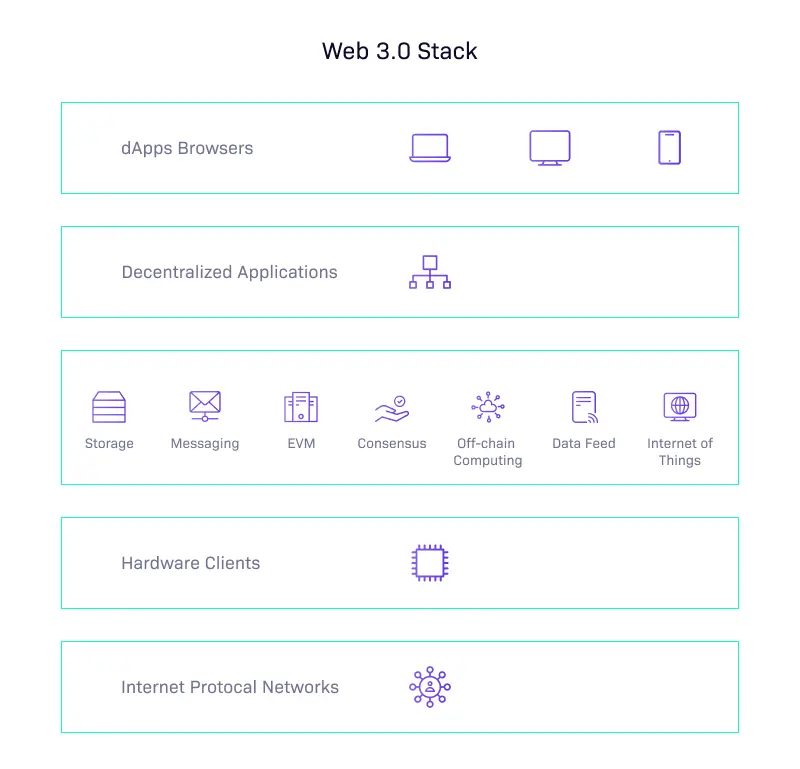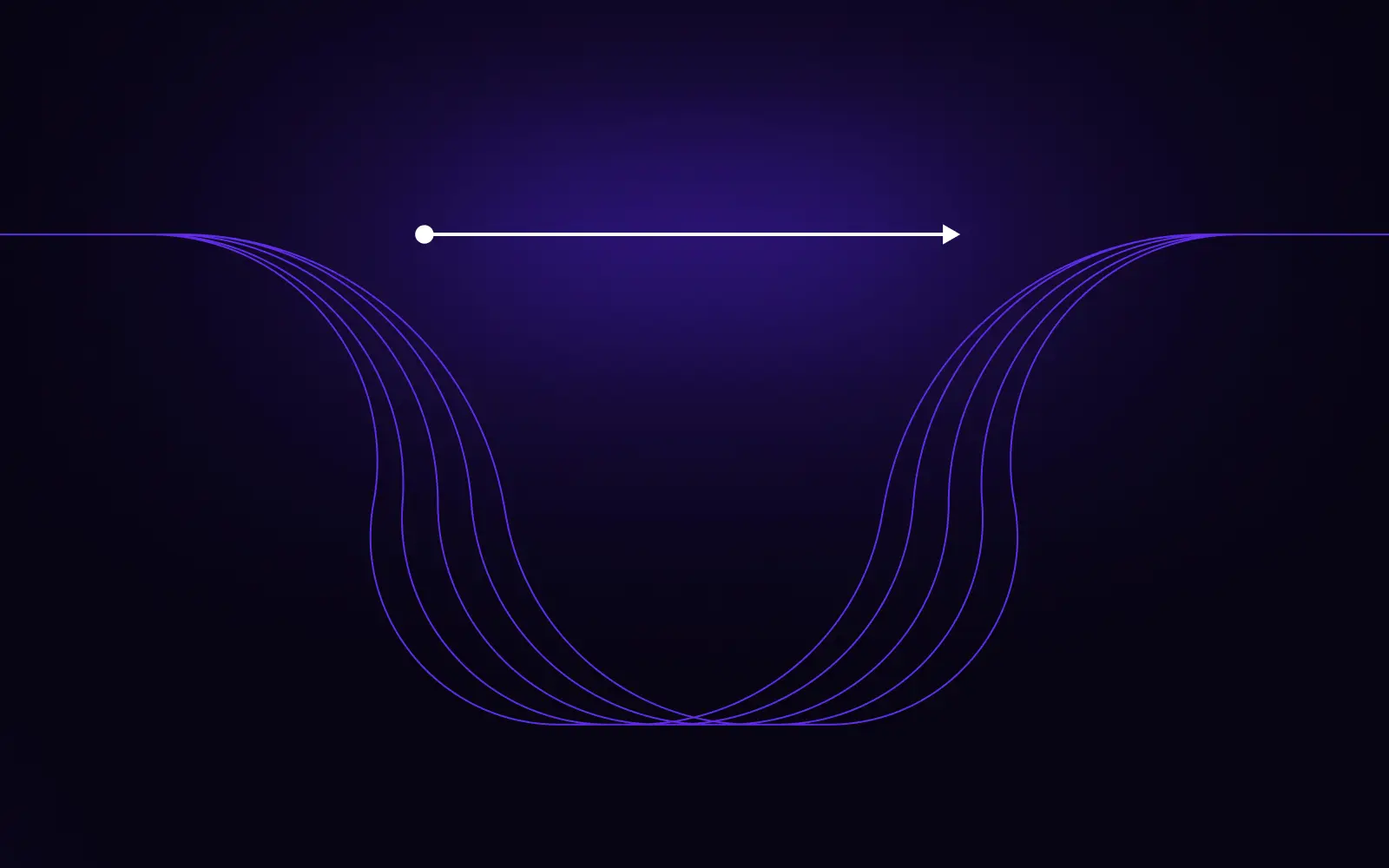
We recently wrote about Web 3.0 — what it is, the pillars that underpin it, and the role that blockchain technology has to play. Many journalists and technologists have spoken of Web 3.0 as a potential solution to the domination of the web by the so called 'big tech companies.' There's also a view that it could lead to better online security, and increased privacy and help deal with data breaches - the key issues that currently plague Web 2.0. But there are also many other benefits for businesses. Let’s take a closer look at how Web 3.0 technologies can help you gain a competitive advantage.
A recap of Web 3.0
Let's start with a brief history of the world wide web. Where Web 1.0 was the era of the static information portal, web 2.0 (the period which started in 2005 and continued to the present day) is about user generated content, big data, and advertising. It is the era of widely adopted social networking sites, allowing users to share information and digital assets. In both cases (Web 1.0 and Web 20.0) data is held on centralized servers.
The Web 3.0 Tech Stack
While it’s still too early to know the exact Web 3.0 tech stack, we do know that it will bring about revolutionary backend changes and we can make assumptions about its structure. Unlike its predecessors, the Web 3.0 blockchain stack has a decentralized network which is highly user-centric. As it will be governed by peer-to-peer technology, it means that knowledge won’t be controlled by any individual entity. There will be no centralized servers, with data being instead spread among individual devices belonging to internet users. Individual freedom and consumer privacy on the world wide web will become increasingly important.

The Semantic Web
Web 3.0 is also often known as 'The Decentralized Web', or 'The Semantic Web' because its ultimate goal is to make internet data readable by machines. The term 'semantic' literally means 'relating to or meaning in language or logic.' In the context of the semantic web, data is given meaning through its relationship with other data. The semantic technology will help users to interact freely.
Web 3.0 protecting the 'real life' identity of internet users
Unlike with Web 2.0, Web 3.0 brings hope of the disconnect between a user’s online presence and their physical self, meaning that you’re much more likely to be able to leave anonymous comments on posts and make payments without buyers knowing your identity. This means that users can make purchases, download content and imagery, all without this being traced to their real person.
In summary, Web 3.0 is all about web users, who are generating more digital content than ever before. This is why companies jumping on the Web 3.0 bandwagon sooner than others are likely to win over their users by offering innovative, secure content solutions and a better onboarding experience.
Reasons why businesses should embrace Web 3.0
There are several reasons for why it makes sense for businesses to investigate Web 3.0 and the blockchain technology that underpins it and start making use of it now.
Improved trust through returning data ownership to web users
KPMG recently reported that consumers are feeling increasingly uneasy about company data collection practices. Among the business leaders surveyed, 62% felt that their companies should do more about data privacy. A third of them said that consumers should be more concerned about how their data is used by their company, while 29% admitted that their company has sometimes used unethical means to collect private data.
All this signifies that it’s important for companies to place a greater focus on consumer privacy, and what better way to restore trust and place yourself ahead of the competition, then by using the blockchain technology utilized in Web 3.0? Storing consumer data on blockchain makes that data automatically decentralized and therefore transparent. It is also more likely to protect it from data breaches and identity theft. Some blockchain experts believe that returning data ownership to consumers might even disrupt the tech industry. Many tech giants which previously held huge amounts of data would likely lose access to the very thing that made them stay competitive.

Smart contracts on the blockchain network play a key part in this equation. They are self-executing contracts, which means that the terms of the agreement between the buyer and the seller are directly written into lines of code. It’s important to note that all transactions are trackable and irreversible. Smart contracts save time and conflict; and they are cheaper, faster and more secure than traditional payment systems.
Better onboarding and user journeys
The blockchain technology that underpins Web 3.0 can also be used to provide users with simpler and more user friendly onboarding processes. A good example of how this works is using your Facebook login for access to many other websites. Blockchain uses the same approach, but with the important difference that unlike Facebook and many tech giants, it doesn’t store users’ information. This is because under blockchain every end user owns their own data. Ultimately, the benefit to you as a business is that consumers will have a simple way to sign into the website, and you won’t have to worry about storing any data at your end. In doing so, you’re removing any data security issues.
Beyond onboarding, Web 3.0’s tech stack (as shown above) will aid in the creation of efficient and effective customer journeys. The use of artificial intelligence will enable certain elements of the process to be automated, meaning that businesses will be able to allocate resources more efficiently to the parts that require human involvement.

Better customer engagement
Web 3.0 technology eliminates the need for third-party ID verification, which is again good news for consumers, as it links back to point 1 above - i.e. giving internet users control over their own data. This isn’t necessarily great for companies as it reduces the amount of valuable data stored and arguably leads to less insight into customers’ demographics and behaviors from each web page. However, Web 3.0 actually offers a new approach to engaging with customers and collecting valuable information about their behavior. Instead of relying on stored data, and ad-supported marketing models, companies can use a decentralized model to align economics across all users. The Web 3.0 approach supports user-generated digital content and user interaction which will also likely make consumers more open. Businesses will be able to tap into these voluntarily published preferences and adapt their product-market fit accordingly.
New opportunities for innovation (particularly through NFTs)
We’ve written a lot about NFTs, both traditional and fractional, but what we haven’t yet covered is how they can be useful to businesses. Non-fungible tokens are digital files whose unique identity and ownership are verified on a blockchain. The word ‘fungible’ in economics is an asset with units that are easily interchangeable, like money. But something that is non-fungible possesses unique properties, which means that it cannot be interchanged.
NFTs are already being used by some savvy businesses as a new method of digital marketing. They’re using NFTs which are associated with a virtual product to help boost the sales of that product. The video game industry is a good example of this, as it’s rapidly growing in global popularity and is a prime space for reaching new audiences. Luxury brands allow consumers to buy virtual versions of products that appear in games (within the cyber universe) before their real-life counterparts (the physical objects) are available in the market. This is a fantastic way to create buzz and get people to sign up to the wait lists of products and it's just one example of how Web 3.0 will bring the digital world and the physical world closer.
There are also further uses of the tech stack that Web 3.0 has to offer which can be put to good use by businesses. For example, Google is constantly working on the development of its augmented and virtual reality technology. In the context of geolocation, this can produce 3D maps to help customers find your business.

Cost-saving
As mentioned above Web 3.0 (or 'The Semantic Web') is all about putting data and content back in the hands of the users, and diminishing reliance on big tech. For SMEs in particular, the network effects that Web 3.0 will bring, will help to insulate them from the threat placed by major technology players. It will mean that they won’t have to pay the high fees that they currently pay for intermediary services (such as those in the delivery sector), referrals (such as travel bookings), advertising and more. With the influence of the monopoly waning, they will also have increased bargaining power. All of this will ultimately lead to better products and services with fairer pricing.
Embrace Web 3.0 technology now and give your business a competitive edge
There are numerous small businesses, scale ups and enterprises out there already putting the emerging technologies of Web 3.0 to good use. Why not tap into it yourself before the dawn of the new internet and start gaining your competitive advantage? Our advice is to focus on one of the above-mentioned areas and brainstorm how you might redefine your user experience using these technologies.
How can 10Clouds help you with Web 3.0?
At 10Clouds, we have a wealth of experience in blockchain technology, with more than 30 individual blockchain products under our belt. We also have a dedicated machine learning team, skilled in a range of artificial intelligence solutions that can take your product to the next level. In a nutshell, we’re prepared for the advent of Web 3.0 and we can help get your website or app future-proofed. Want to find out more? Get in touch today.



